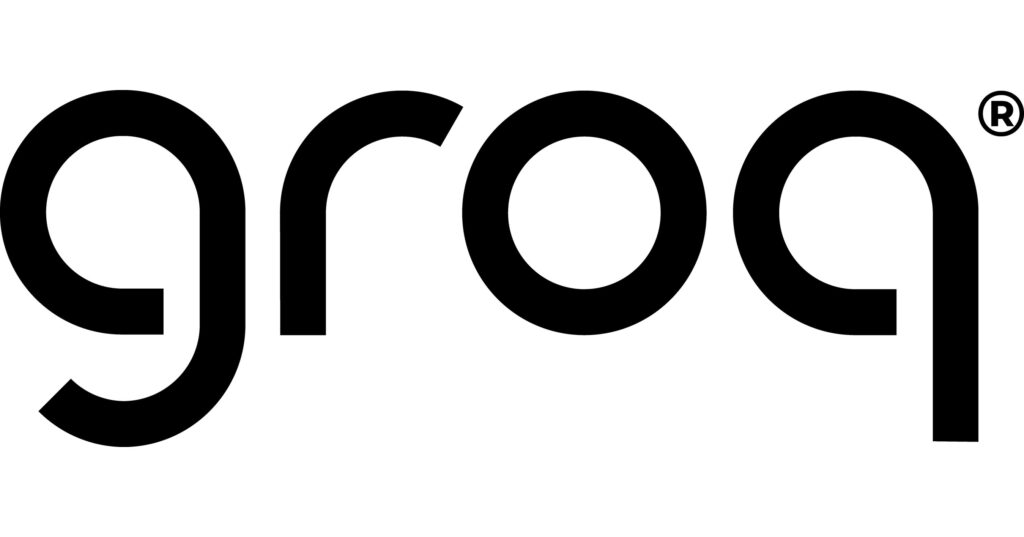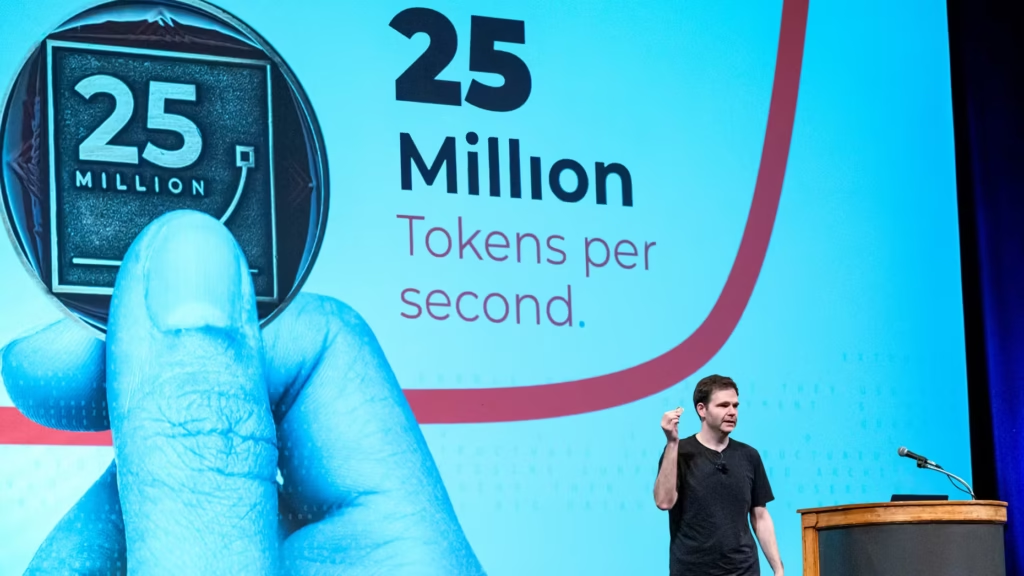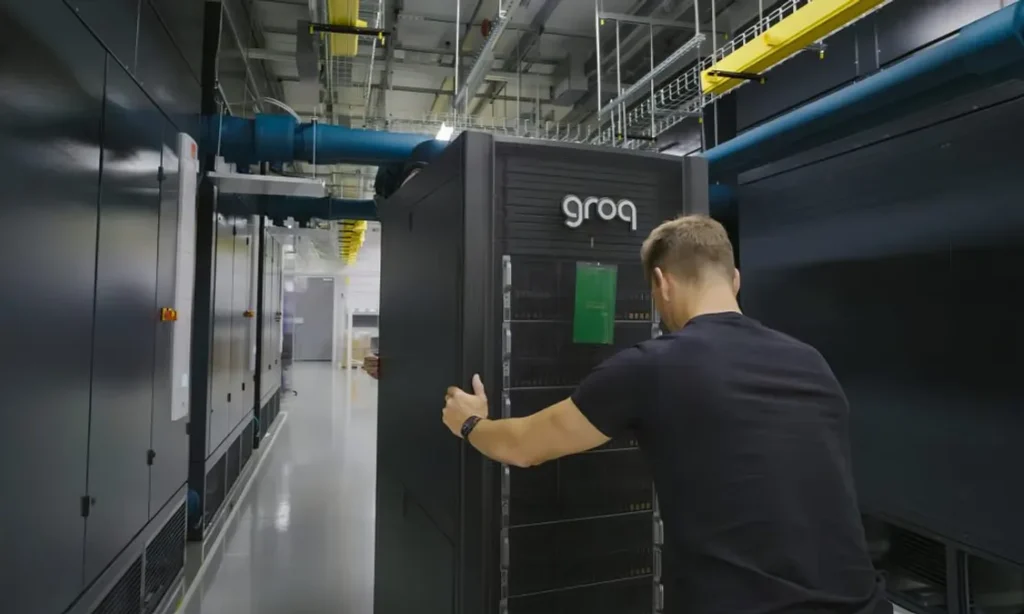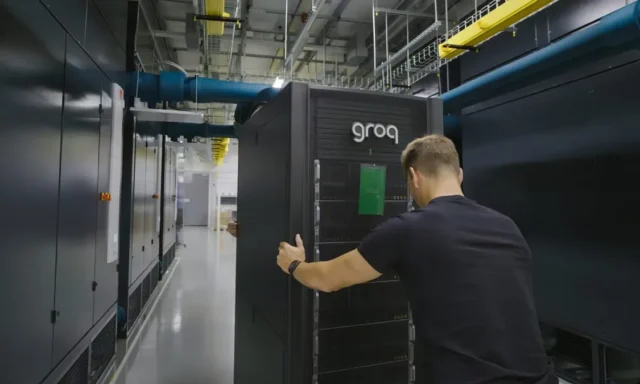Groq, a fast‑rising artificial intelligence chip startup aiming to rival industry heavyweight Nvidia, has sharply reduced its projected revenue for fiscal 2025. Once forecasting more than $2 billion in revenue, Groq now estimates barely $500 million, revealing a dramatic scale‑back amidst ongoing $300–500 million funding talks aimed at securing a $6 billion post‑money valuation.
This recalibration underscores both the execution risk at play and the fine line Groq is navigating between ambitious growth and overpromising. Below, we unpack the details, context, drivers, risks, and implications of this sudden pivot in guidance.
Table of Contents

From $2 Billion to $500 Million: What Changed?
Earlier in 2025, Groq shared with investors a 2025 revenue forecast exceeding $2 billion. This ambitious number coincided with a $1.5 billion commitment from Saudi Arabia to expand Groq’s AI inference infrastructure, particularly in Dammam. That deal was the cornerstone of the higher projection.
However, internal documents viewed by The Information indicate that within a matter of months, projections were revised downward by more than $1.5 billion, setting the new estimate just above $500 million. The company attributed the revisions to delays in data center deployment capacity, which they said pushed portions of the projected revenue into 2026.
In response to industry scrutiny, Groq COO Sundeep Madra reportedly contested both numbers, suggesting initial estimates did not reflect “latest business developments” including a new deal with Bell Canada, and added AI models coming online via GroqCloud™.
The Funding Round: $6 Billion Valuation Target
At the same time as the projection cut, Groq is in advanced stages of negotiating a Series E funding round of $300–500 million, targeting a $6 billion post‑investment valuation. This would nearly double its $2.8 billion valuation established in its August 2024 Series D round led by Cisco Investments, Samsung Catalyst Fund, and BlackRock Private Equity.
Groq has told investors that the Saudi Arabia contracts alone will contribute approximately $500 million in revenue during 2025—effectively anchoring the revised guidance largely on that single agreement.
Strategic Context: Groq’s Technology and Market Position
Specialised Inference Chips
Groq’s core value proposition centres on its Language Processing Unit (LPU)—a highly optimised AI chip architecture tailored exclusively for inference workloads. Unlike Nvidia GPUs that handle both training and inference, Groq’s devices aim for near-instantaneous real‑time response, lower latency, and higher throughput per watt, making them attractive for large language models and real-time applications.
The company has indicated plans to deploy over 100,000 LPUs by early 2025 and ramp up to 1.5 million by year‑end. CEO Jonathan Ross has suggested Groq could handle up to 50% of global inference compute capacity if execution proceeds smoothly.

Key Partnerships and Expansion
- Saudi Arabia: $1.5 billion AI infrastructure deal announced at LEAP 2025, focused on the Dammam inference hub.
- Bell Canada.
- European Data Centre: Groq is opening its first European compute centre in partnership with Equinix, targeted at sustainability-conscious and NATO‑aligned clients.
These initiatives illustrate Groq’s ambition to scale globally and position its cloud‑based inference as an alternative to legacy GPU stacks.
Why the Forecast Shift Matters
Capital Markets Precision
Sharply reducing revenue forecasts amid capital‑raising raises red flags for investors. The shift signals the company is still grappling with execution uncertainties, including infrastructure readiness and supply chain logistics.
A revenue drop from $2 billion to $500 million underscores that even marquee contracts—like the Saudi partnership—may not immediately translate into revenue. It also amplifies scrutiny into Groq’s ability to meet future projections and justifies the revised assumption that a substantial portion of earlier 2025 revenue may be deferred to 2026.
Valuation Multiple Stretch
Assuming $500 million revenue in 2025 and a $6 billion valuation implies a 12× multiple, which may seem steep given that Groq reported just $3.2–3.4 million in 2023 revenue and a net loss of ~$88 million. Investors buying into this multiple are banking on astonishing growth, hingeing on flawless execution, rapid infrastructure deployment, and minimal competition disruption.
Execution and Geopolitical Risks
Key risks include:
- Saudi Infrastructure Delays: If the Dammam hub or chip deliveries lag, the $500 million won’t materialise as expected.
- Geopolitical Uncertainty: Regional tensions or a changing investment climate could hinder Groq’s rollout plans.
- Competitive Pressure: Giants like Nvidia and AMD continue evolving capabilities. Groq remains a niche in the inference space with execution risk if market adoption slows or stalls.
What It Means for Stakeholders
For Investors
- Aggressive upside: If Groq hits even a fraction of its deployment and revenue goals, the valuation leap may be justified, particularly amid rising demand for inference-optimised chips.
- High risk: The revenue revision highlights how easily assumptions can shift—investors should watch for hard data in 2026 and beyond before committing further capital.
For Enterprise Customers
- Enterprises seeking cost‑effective, low‑latency inference may view GroqCloud™ and LPU deployments as compelling, particularly in regulated or sovereign contexts like defence or national AI infrastructure.
- That said, trial deployments may start cautiously until Groq’s hardware and cloud services prove reliably scalable.
For Competitors
- Groq’s traction may accelerate rival efforts to solidify their own inference roadmaps. Nvidia could enhance its inference‑only offerings; AMD and others may aggressively push chip diversification.
- If Groq struggles with scale or execution, competitors may reclaim lost ground quickly.
Looking Ahead: Key Milestones to Watch
- 2026 revenue realisation: How much of the $1 billion deferred revenue is actually delivered, and when.
- Funding Round Closure: Does Groq secure $300–500 million at a $6 billion valuation? How are terms structured?
- Hardware Deployment: Will Groq meet its goal of 1.5 million LPUs deployed by end‑of‑2025?
- Customer Activations: Commercialisation of the Saudi hub, Bell Canada network, and European data centres.
- Competitive response: New announcements from Nvidia, AMD, and others on inference-optimised products.

Conclusion
Groq’s dramatic revision of its 2025 revenue outlook — cutting from over $2 billion to about $500 million — is a significant course correction. While grounded in real challenges around infrastructure capacity and timing, the rollback comes at a sensitive moment: as the company courts fresh capital at a lofty $6 billion valuation.
The key phrase here—Groq Cuts 2025 Revenue Projections Amid Funding Talks—reflects both the headline risk and opportunity. For aggressive investors, Groq may still deliver lifetime-scale returns if it executes. But for more conservative stakeholders, waiting for proof—especially how the revenue deferral plays out in 2026—might be wise.
Ultimately, Groq’s LPU-centric strategy positions it as a bold, disruptive contender in the AI inference arena. But until capital pours in and infrastructure delivers, the gap between ambition and actual revenue remains wide. The coming quarters will reveal whether Groq can bridge that gap—and whether scepticism or success prevails.
Join Our Social Media Channels:
WhatsApp: NaijaEyes
Facebook: NaijaEyes
Twitter: NaijaEyes
Instagram: NaijaEyes
TikTok: NaijaEyes








































